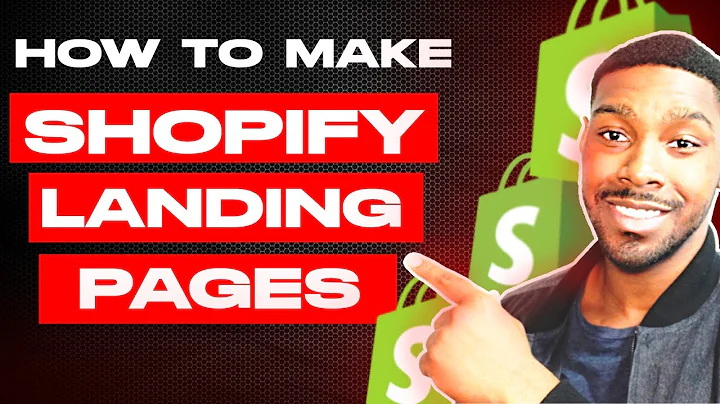Pre-Order vs Pre-Made: Which is Better for Your Clothing Brand?
Table of Contents
- Introduction
- Choosing Between Pre-Made and Pre-Order
- Pros and Cons of Pre-Order
- Pro: Generates Interest
- Pro: No Upfront Cost
- Con: Long Shipping Times
- Con: Risk of Not Meeting MOQ
- Pros and Cons of Pre-Made
- Pro: Fast Shipping Times
- Pro: Predictable Demand
- Con: Inventory Risk
- Con: Cash Flow Challenges
- Making the Right Decision for Your Clothing Brand
- Conclusion
Pre-Made vs Pre-Order: Which is Better for Your Clothing Brand?
When starting a clothing brand, one of the important decisions you'll have to make is whether to go with pre-made or pre-order garments. Both options have their pros and cons, and choosing the right one can greatly impact the success of your brand. In this article, we will discuss the advantages and disadvantages of both pre-made and pre-order, helping you make an informed decision.
Pros and Cons of Pre-Order
Pro: Generates Interest
One of the major benefits of running a pre-order is the ability to generate a lot of interest in your drop. By teasing the upcoming release and creating anticipation, you can create a sense of exclusivity and excitement among your audience. People will eagerly await the drop and sign up for email marketing and SMS updates, eager to get their hands on the limited edition pieces. This buzz can result in a high volume of sales during the pre-order phase.
Pro: No Upfront Cost
Another advantage of pre-order is that it doesn't require any upfront cost. With pre-order, customers place their orders and make their payments before you place the bulk order with your manufacturer. This means you don't have to worry about investing a large sum of money upfront or carrying inventory. It allows you to start your brand even with limited financial resources.
Con: Long Shipping Times
One of the downsides of pre-order is the long shipping times that customers have to endure. Since you need to wait for all the orders to come in before placing the bulk order with your manufacturer, it can take anywhere from two to four weeks for the customers to receive their products. This extended wait time can lead to customer dissatisfaction and potential chargebacks if not managed properly. It's important to communicate clearly with your customers, providing regular updates on shipping times and setting realistic expectations.
Con: Risk of Not Meeting MOQ
With pre-order, you always run the risk of not meeting the minimum order quantity (MOQ) required by your manufacturer. If you don't have enough orders to meet the MOQ, you may have to cancel the drop and disappoint your customers. This risk is especially significant for new brands or those with a limited customer base. Additionally, you need to have the out-of-pocket money to meet the MOQ requirements set by your manufacturer, which can be a challenge for brands with limited financial resources.
Pros and Cons of Pre-Made
Pro: Fast Shipping Times
If you opt for pre-made garments, you can offer fast shipping times to your customers. With the inventory already on hand, you can ship out the orders within one to two days, providing a quick turnaround for your customers. This fast shipping time can greatly enhance customer satisfaction and encourage repeat business.
Pro: Predictable Demand
With pre-made drops, you have a clearer understanding of the demand for your products. You know exactly how many units you have in inventory, eliminating the uncertainty of pre-order drops. This predictability allows you to plan your production and inventory management more effectively, ensuring you have enough stock to meet customer demand without excess inventory.
Con: Inventory Risk
One of the main challenges of pre-made drops is the risk of carrying inventory. You have to invest your own money upfront to purchase the garments and store them until they are sold. This can be a significant financial commitment, especially if you overestimate the demand for your products and end up with unsold inventory. It's crucial to carefully estimate the number of units you need to avoid tying up too much capital in inventory.
Con: Cash Flow Challenges
Running pre-made drops requires a good amount of upfront capital. You need to purchase inventory in bulk, which can put a strain on your cash flow. If your products don't sell as quickly as anticipated, you may find yourself in a cash flow crunch. It's important to have a solid marketing strategy in place to ensure a sufficient number of sales to cover your costs and maintain cash flow stability.
Making the Right Decision for Your Clothing Brand
When deciding between pre-made and pre-order for your clothing brand, there is no one-size-fits-all answer. It ultimately depends on your specific circumstances, goals, and resources. If you're just starting out and have limited financial resources, pre-order may be the best option as it eliminates the need for upfront costs. On the other hand, if you have the capital to invest in inventory and want to offer fast shipping times, pre-made may be more suitable.
Consider your brand's current situation, your customer base, and your budgetary constraints before making a decision. It's important to weigh the pros and cons of each option and choose the one that aligns with your business goals and values.
Conclusion
Choosing between pre-made and pre-order is an important decision that can impact the success of your clothing brand. Each option has its own advantages and disadvantages, and it's crucial to evaluate them based on your specific needs. Pre-order allows you to generate interest and start with limited financial resources, but it comes with longer shipping times and the risk of not meeting MOQ. Pre-made offers fast shipping times and predictable demand, but involves inventory risk and cash flow challenges. Consider your brand's unique circumstances and choose the option that aligns best with your goals and resources.


















